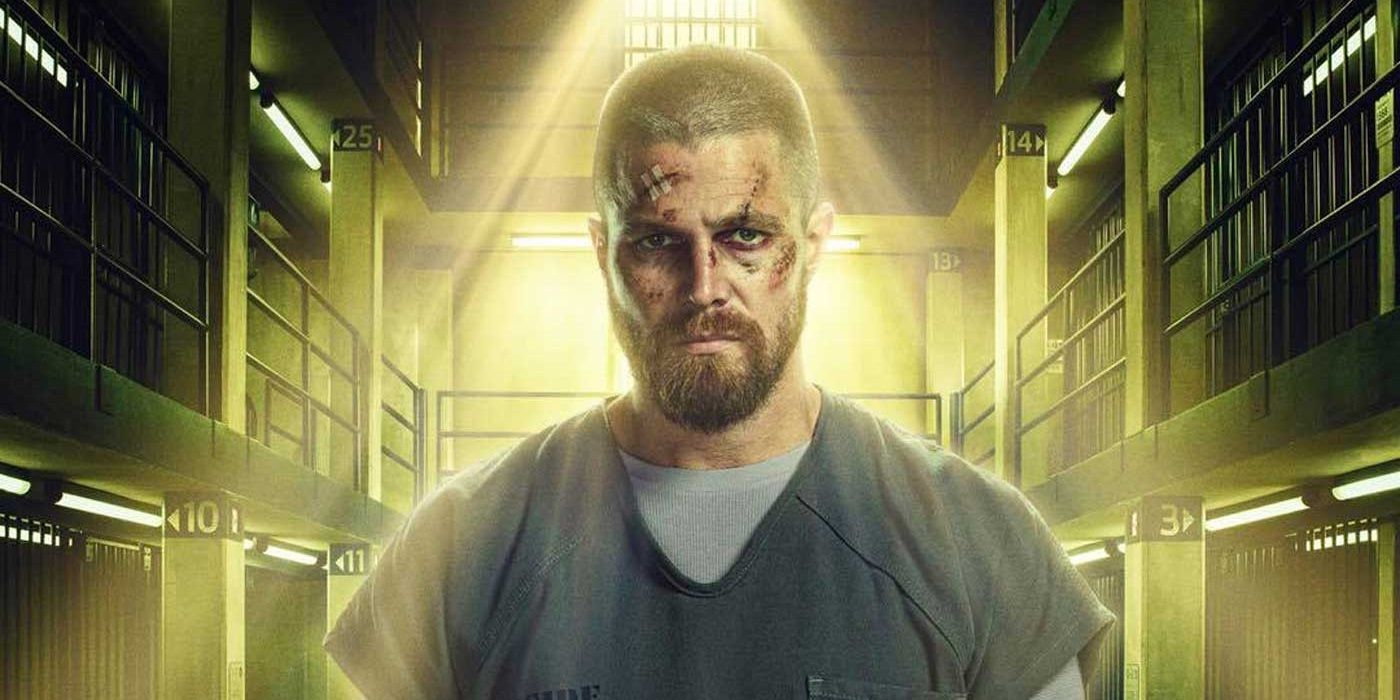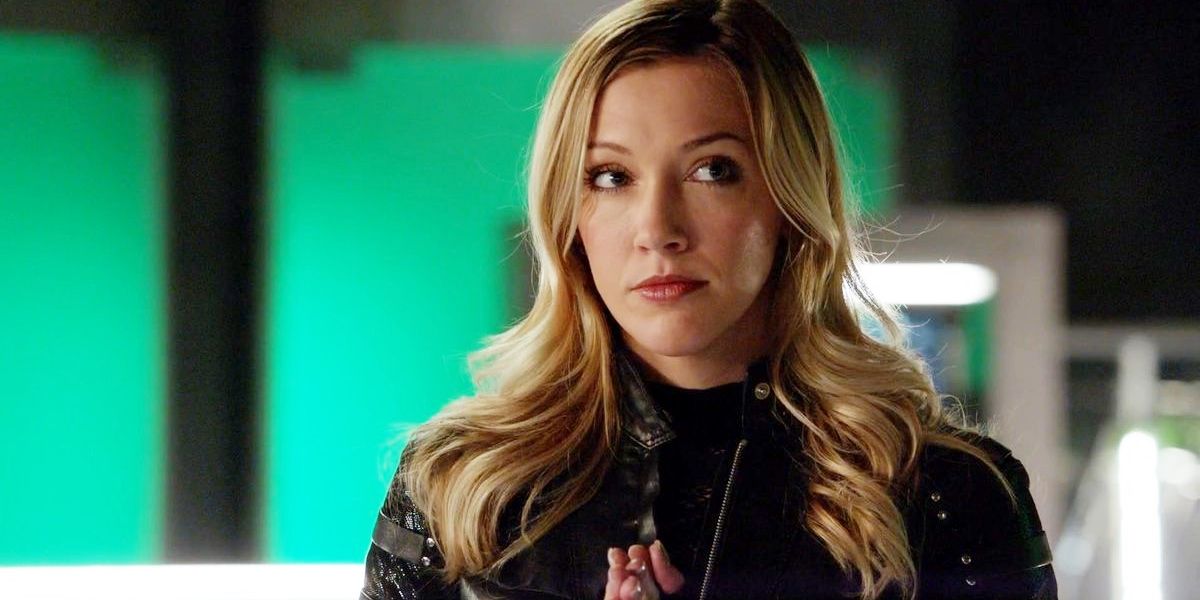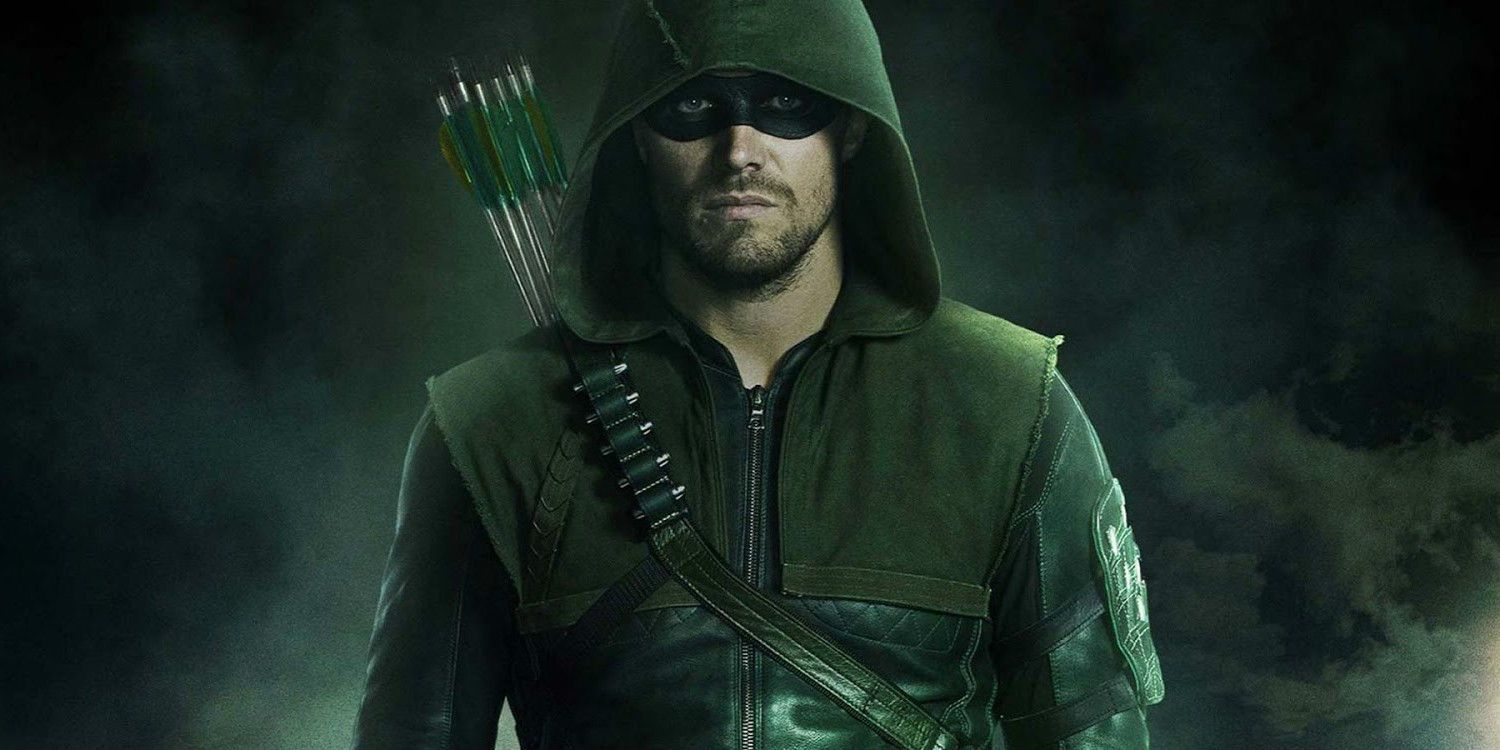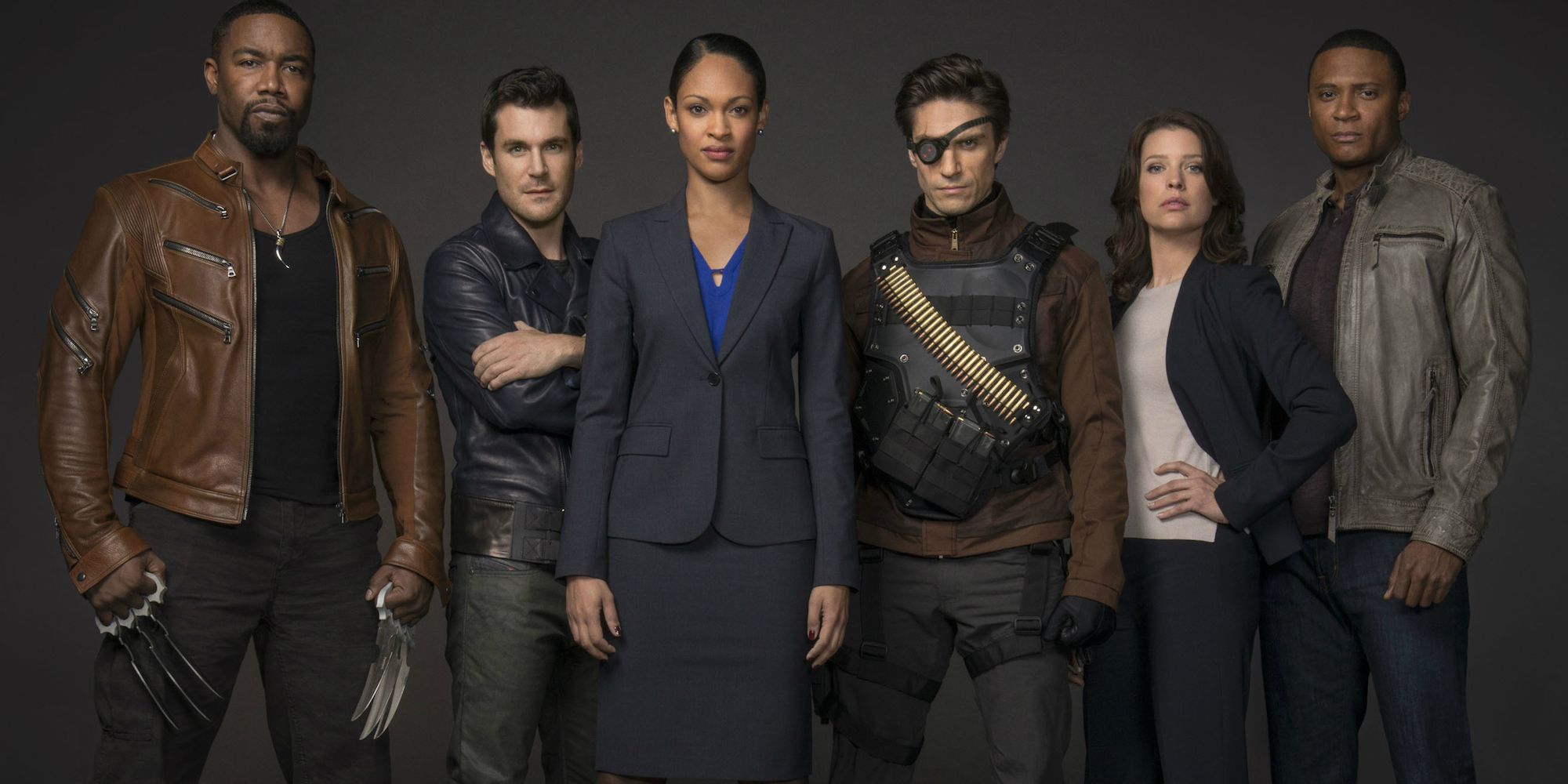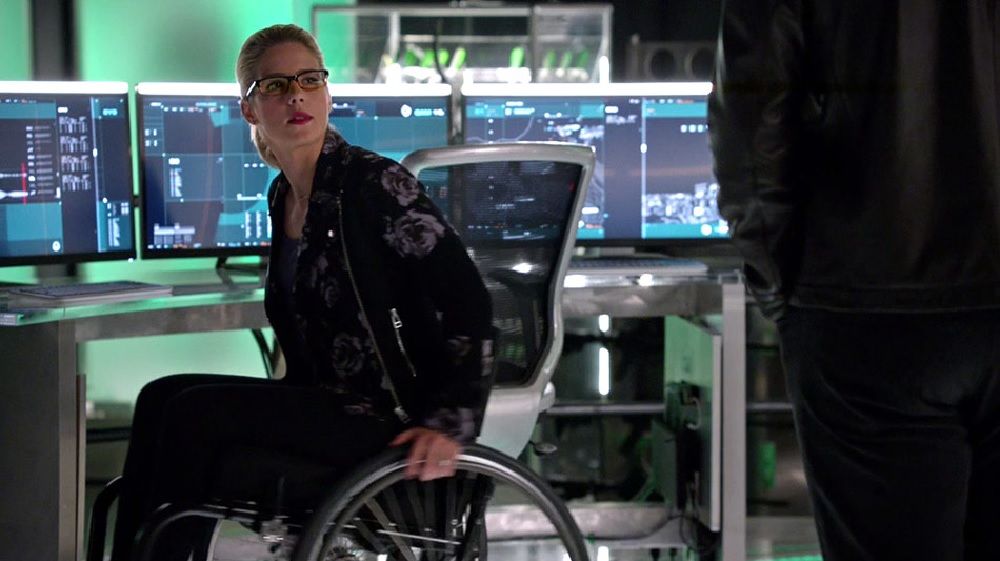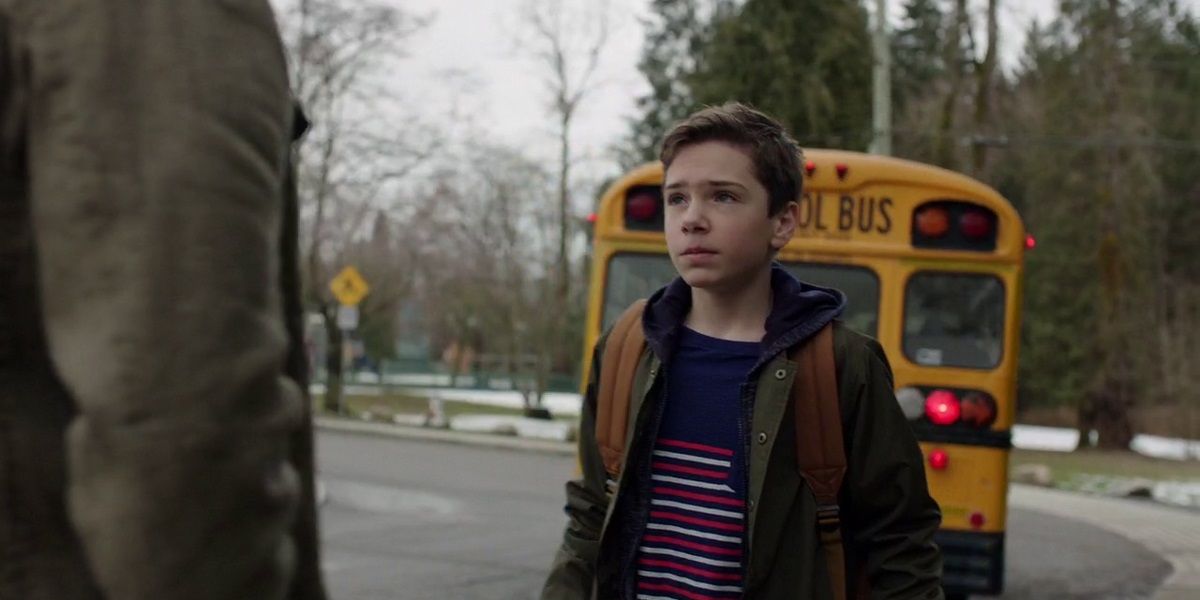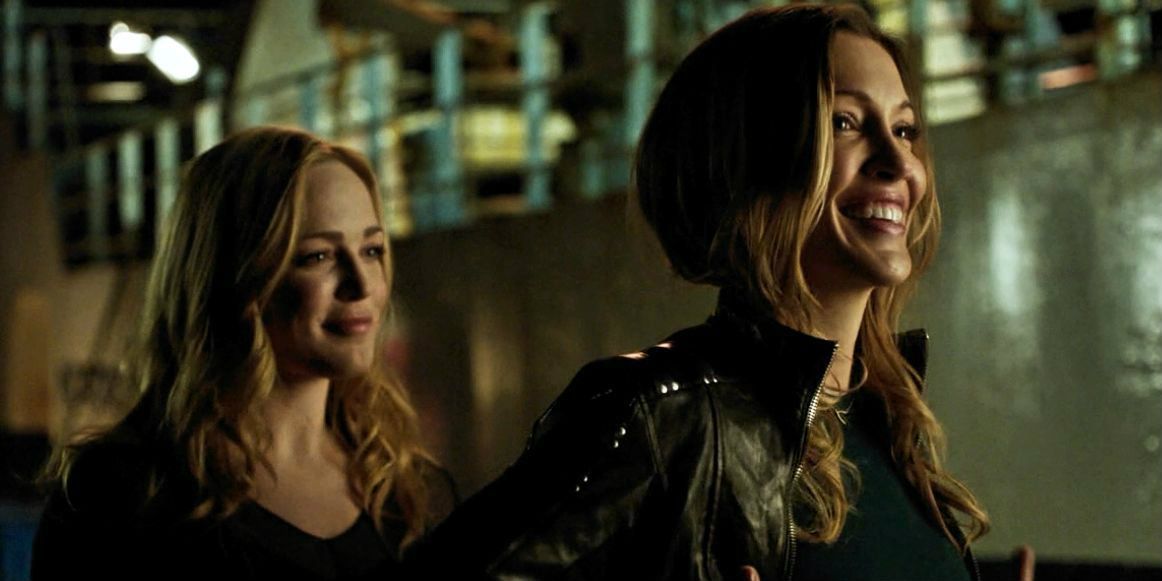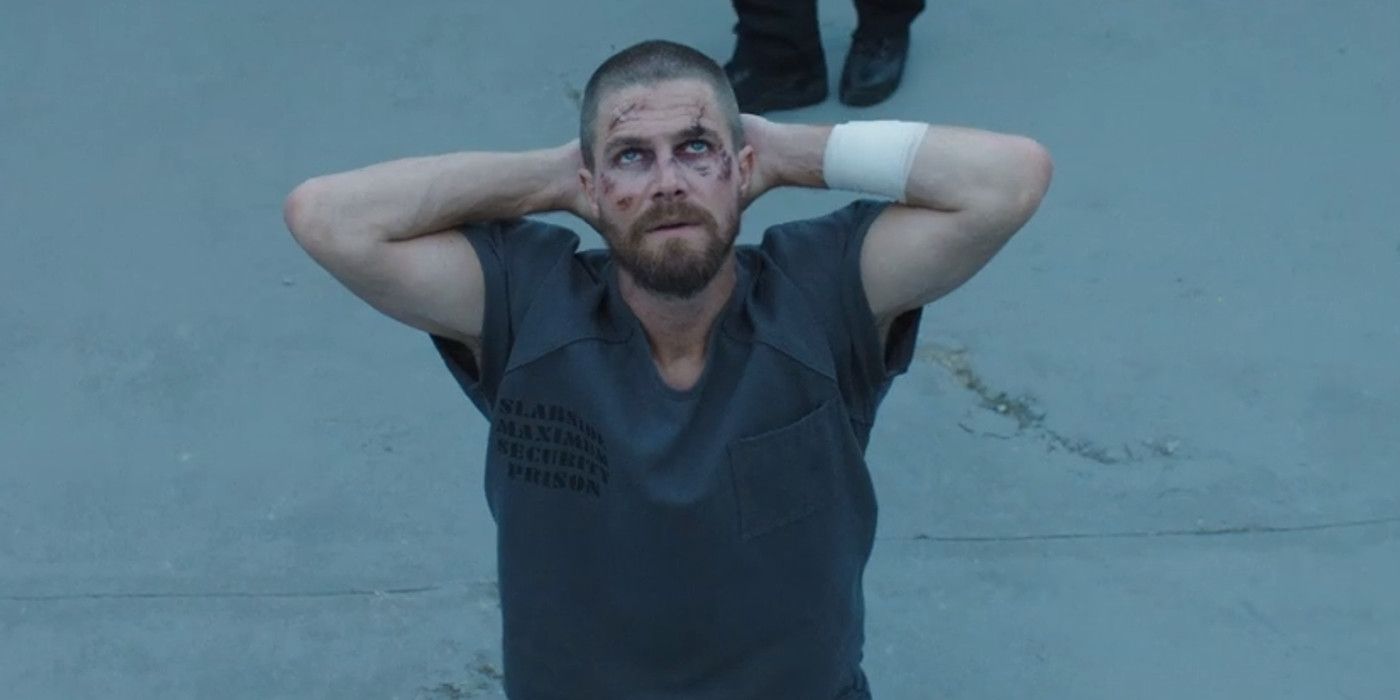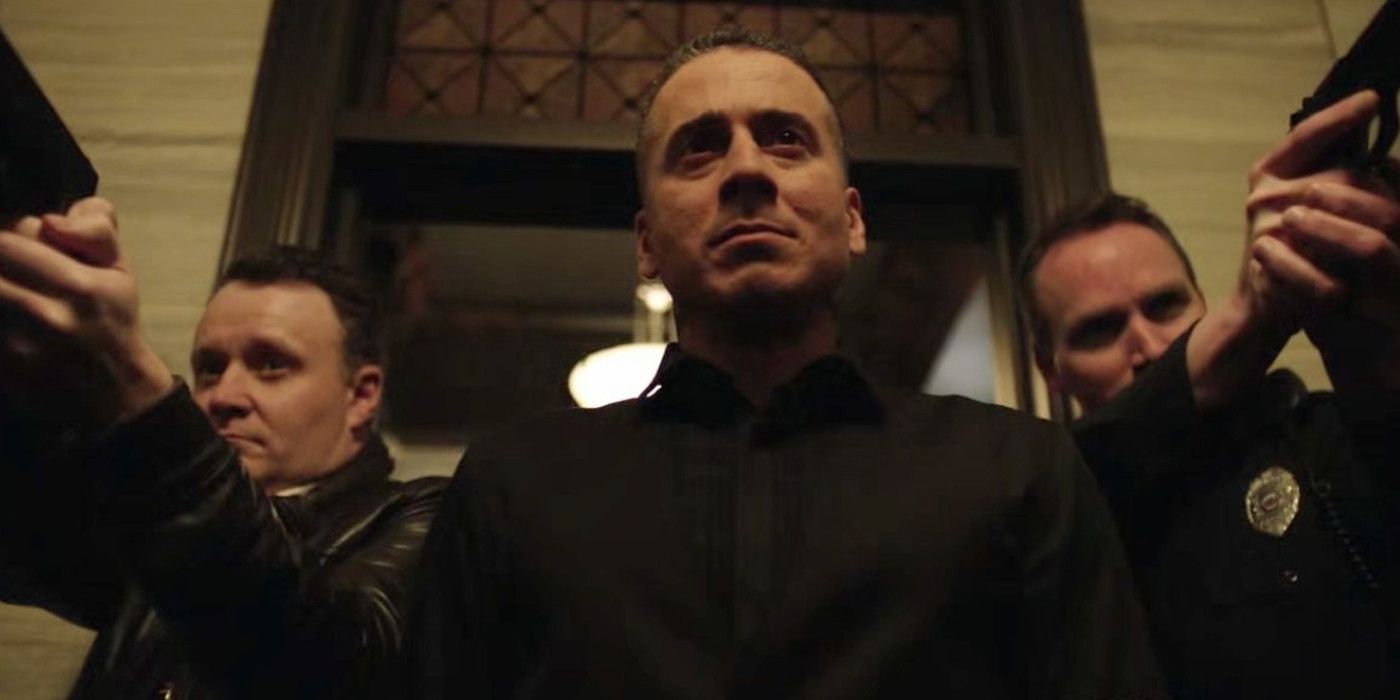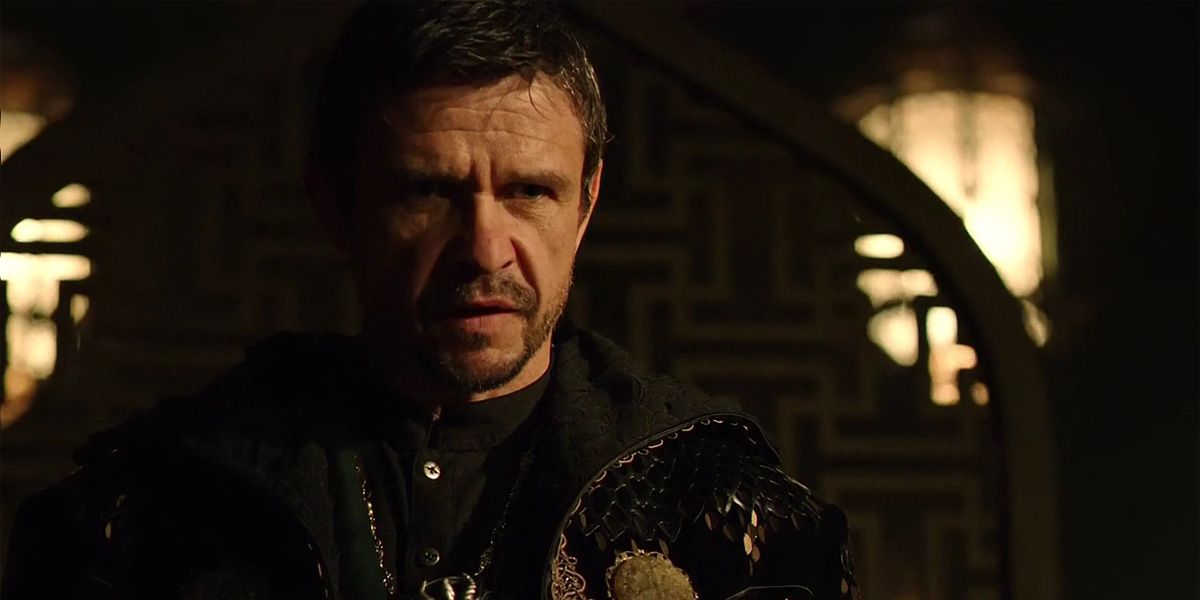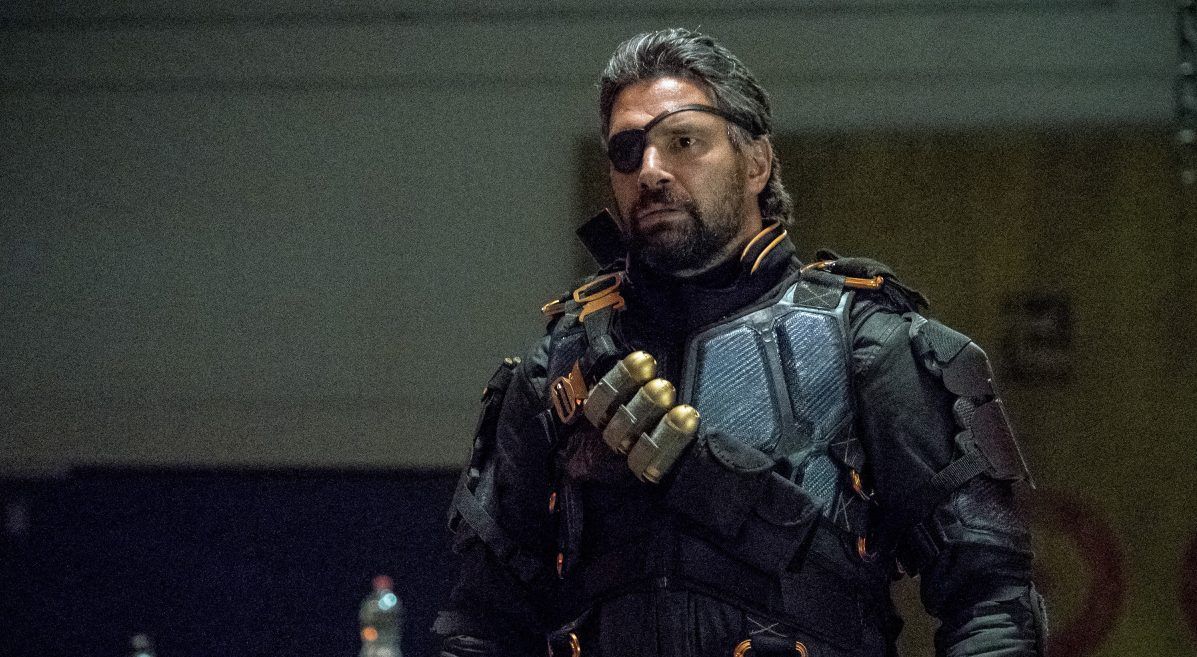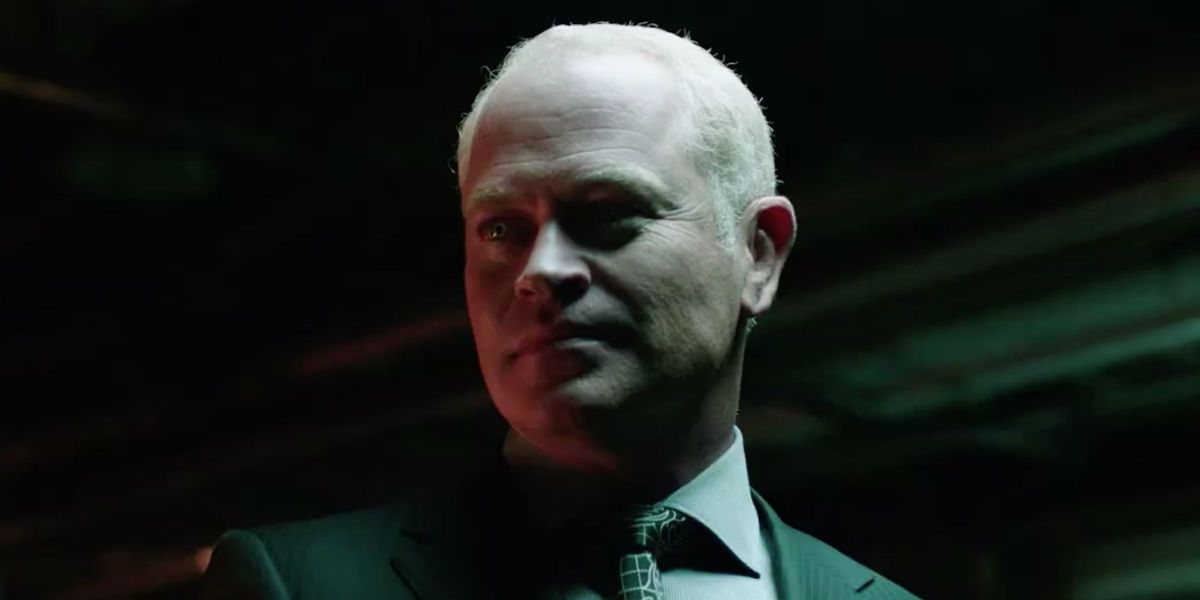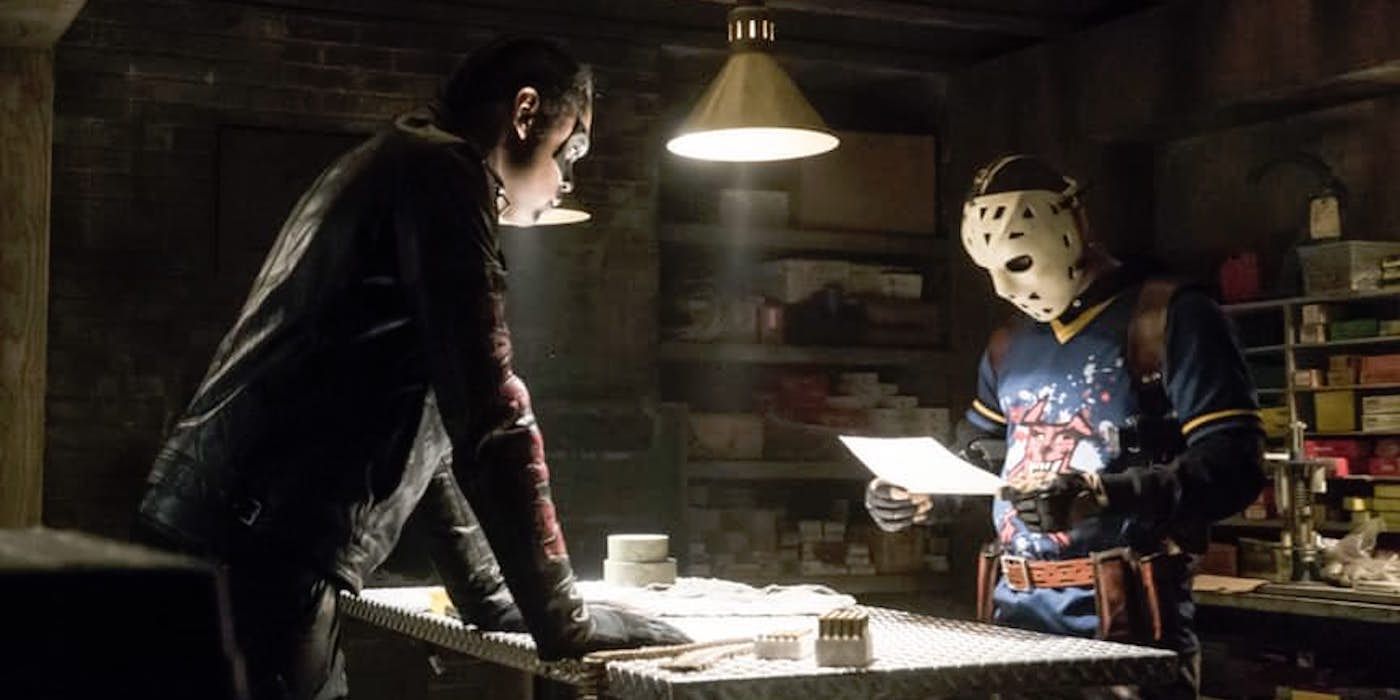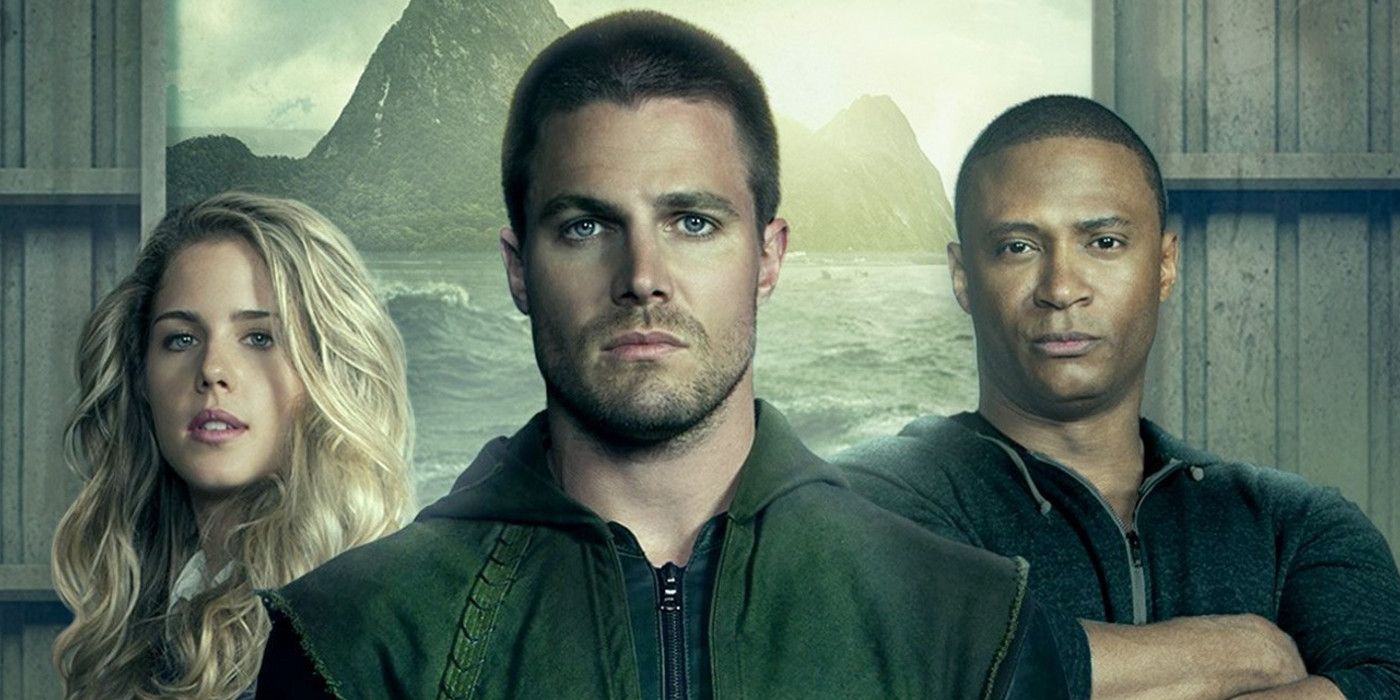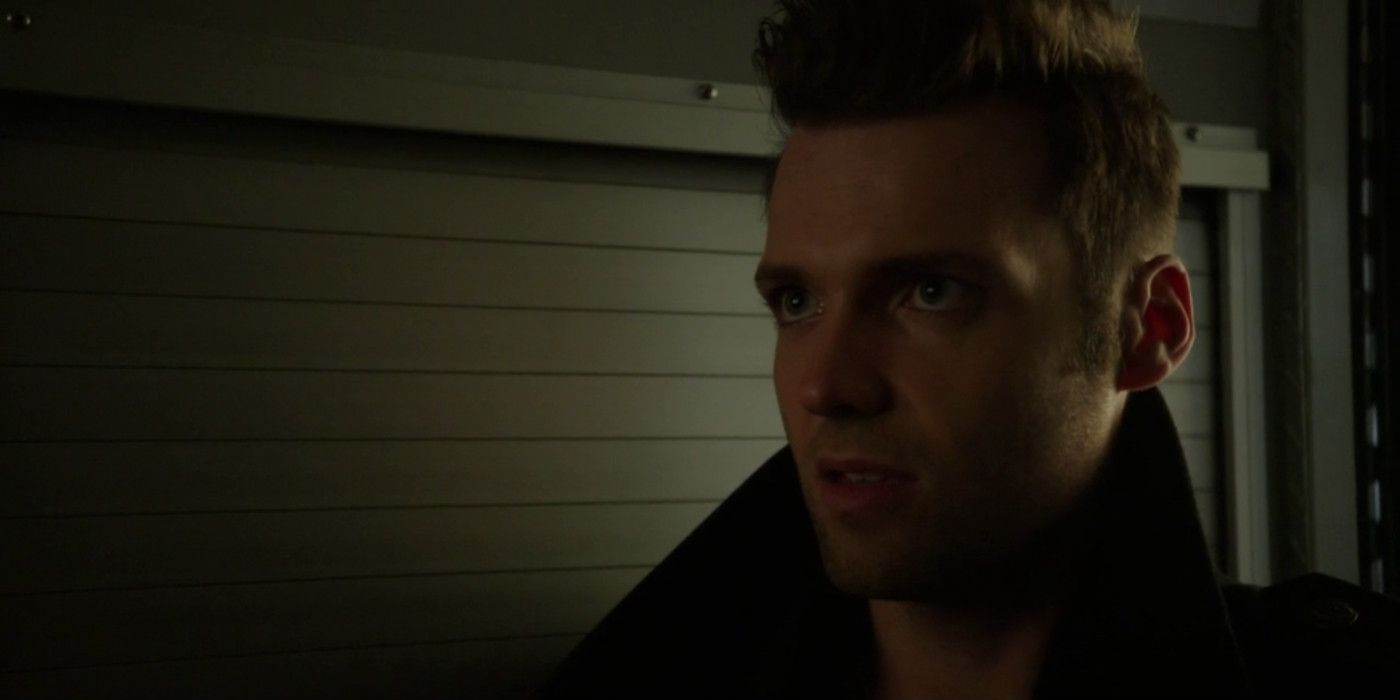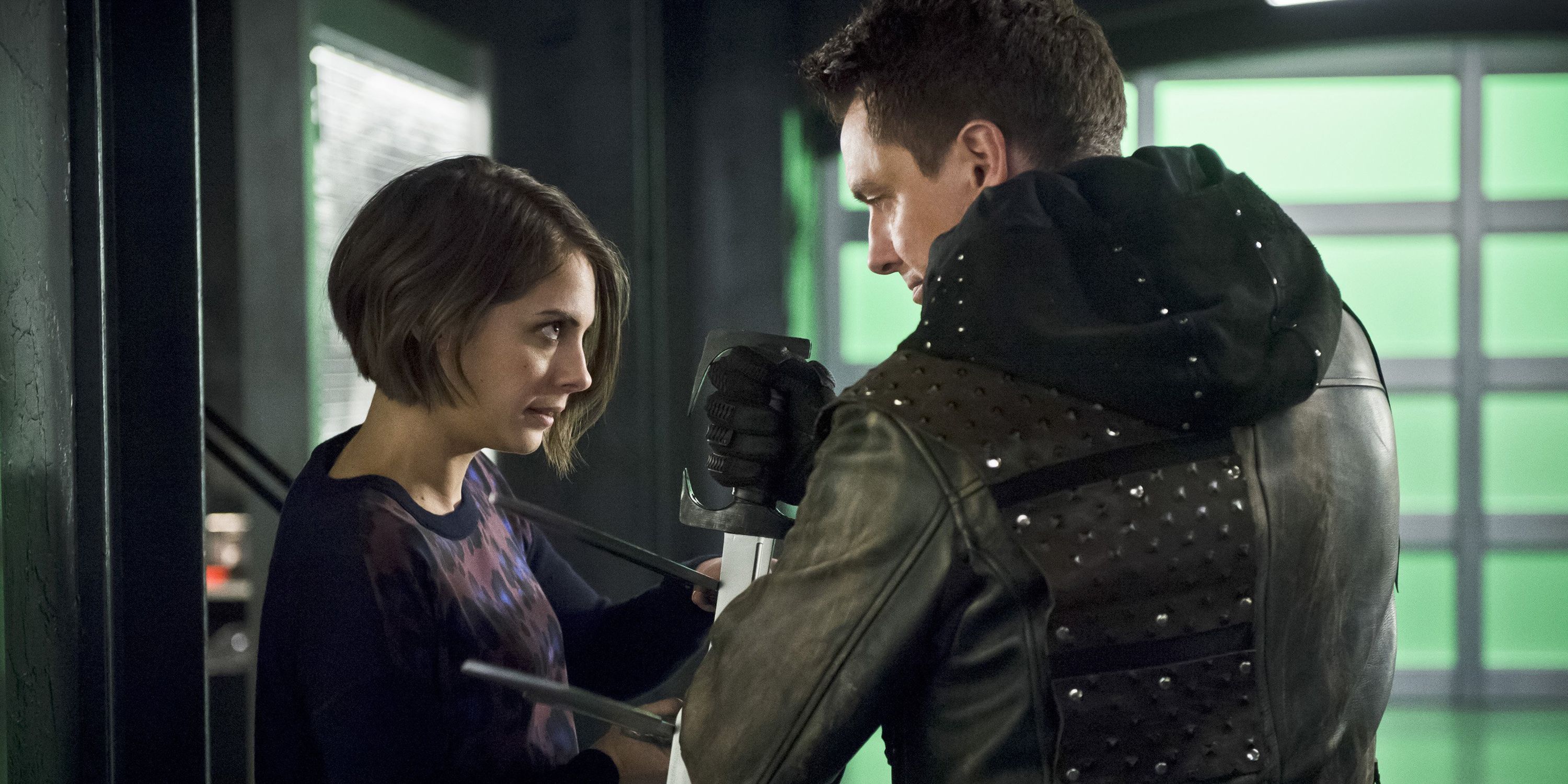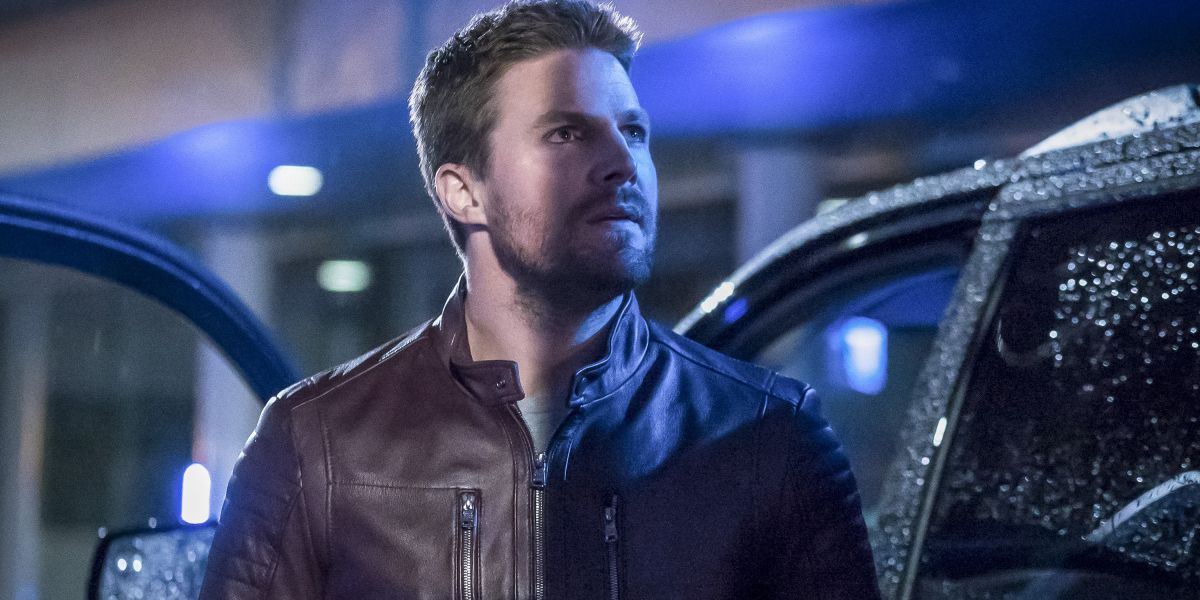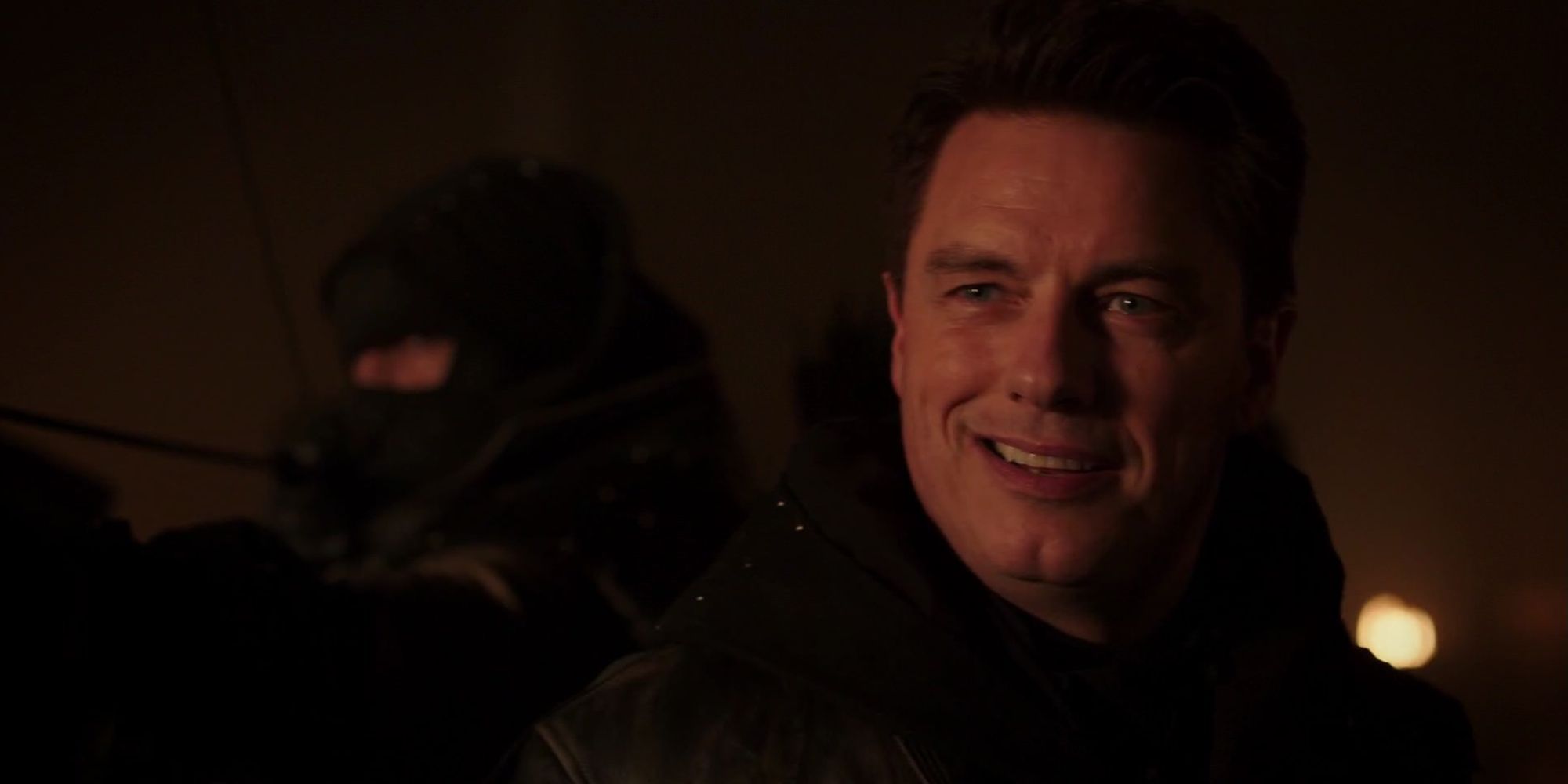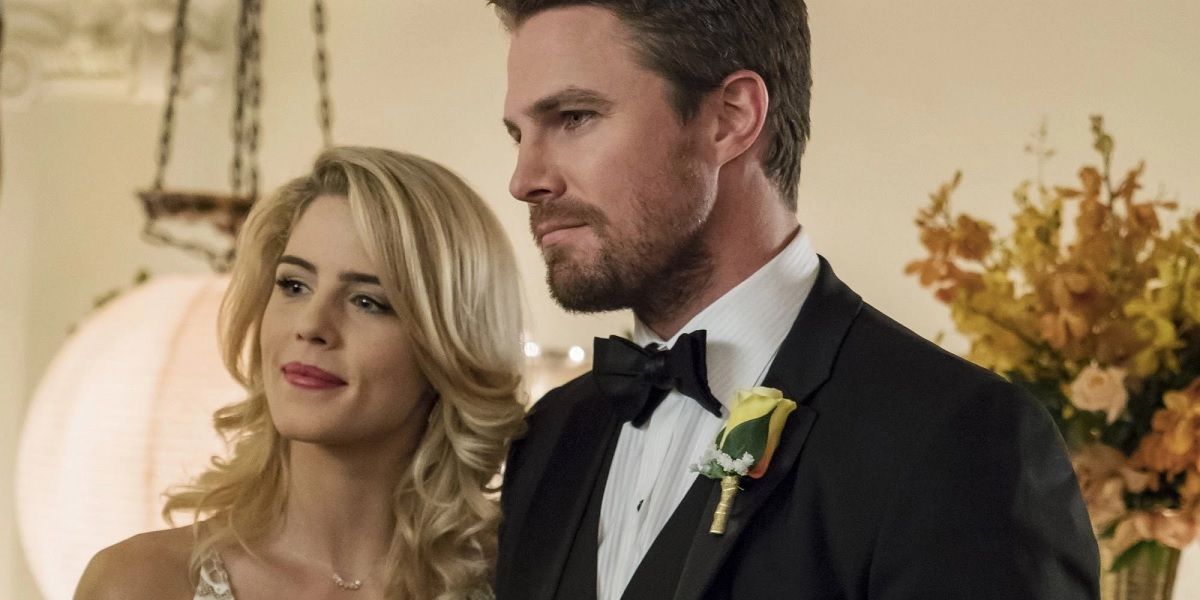The CW's Arrowverse has only gotten bigger and better in the years since Arrow debuted on the network way back in 2012. Intensely popular from the get-go, Arrow spawned an entire connected universe of DC superheroes which has somehow managed to be better received than the big-budget film adaptations also owned by Warner Bros. The Flash, Supergirl, Vixen, Legends of Tomorrow, and Black Lightning all would likely have never been made on The CW if Arrow had failed.
Fans of the entire Arrowverse can thank the creative vision of Marc Guggenheim, Greg Berlanti, and all the Arrow writers, plus the performances of Stephen Amell, Emily Bett Rickards, Katie Cassidy, David Ramsey, and the rest of the actors for this now vast universe. However, none of this means that Arrow is some kind of perfect show-- far from it. This list will count down all the problems and flat-out mistakes that fans have had to overlook to enjoy the show.
From the iffy personal life of Oliver Queen (aka the Green Arrow, Star City's foremost vigilante) to the show's many plot holes to the shaky logic surrounding some of the greatest villains, Arrow is not a show without problems. Ollie's trials and tribulations began after getting shipwrecked on the island of Lian Yu, before he returned to his hometown a hardened martial artist and crimefighter. After 7 seasons on the air, there were bound to be a few inconsistencies.
Here are 20 Things Wrong With Arrow We All Choose To Ignore.
Laurel's demotion
Laurel Lance (played by Katie Cassidy) debuted in the very first season of Arrow, and in the early going it was clear that she was meant to be Oliver Queen's primary love interest. While the couple did act on their attraction more than once, this didn't end up being the most popular pairing for Oliver, and so Laurel became gradually less and less important as the series went on.
This continued until season four, where the character was bumped off entirely. By this point, Oliver and Felicity's relationship had taken center stage, and Laurel's time as the Black Canary hadn't drawn much interest. While Laurel had been an interesting character and seemed destined to be with Oliver, circumstances forced the writers to get rid of her-- though they did keep Cassidy around to play her evil alternate self.
Oliver's actions as The Hood
One of Arrow's major plot points after season one was Oliver Queen's changed stance on the use of lethal force. After spending the first season as a vigilante offing various members of Star City's wealthy, exploitative elite, Oliver changed his stripes due to the passing of his friend Tommy Merlyn. The Hood's actions in the first season has caused conflict with Oliver's teammates in later seasons as they realized he had so many skeletons in his closet.
It still doesn't make a ton of sense that Oliver was so lethal in the first place.
Arrow clearly wanted a darker, edgier tone early on, and it became a very different show. Fans of the show who are still around today mostly just try to ignore Oliver's violence in the first season.
The Suicide Squad
The Suicide Squad is, as any DC fan will tell you, one of the most interesting team-ups in comics. Formed from a group of hardened supervillains under the iron fist of A.R.G.U.S. chief Amanda Waller, the team has drawn many of DC's most recognizable villains to its ranks. The problem? None of the recognizable ones ended up in Arrow.
Reportedly, Arrow showrunners were barred from using some of the Squad's infamous team members (Harley Quinn, The Joker, etc) because Warner Bros. and DC wanted to save them for the movie. Arrow did get to use Floyd Lawton, aka Deadshot, but besides him, was limited to villains like the Bronze Tiger and Shrapnel. Especially when you consider how poorly received the movie version was, this just feels like a waste.
Felicity’s disability was cured way too easily
While it's certainly not the first time a superhero story has fumbled its portrayal of disabled people, it was still disappointing to see Arrow cheaply give Felicity Smoak a disability just so it could turn around and cure it a few episodes later. In season four, Felicity is shot, giving her a spinal cord injury that makes her a paraplegic bound to a wheelchair.
Conveniently, a chip is quickly invented that allows Felicity to essentially walk again without much rehab time or effort.
Oliver gives her this as an engagement present, leaving viewers to wonder why they had this plot arc in the first place. There's's also the problem of depicting a disability as a tragedy that had to be solved, seen by many fans as ableist.
Oliver isn’t a good friend, romantic partner, coworker, or father
Oliver Queen's life is full of secrets. Despite spending his early years as a garden-variety rich boy, Oliver's time on Lian Yu and as the vigilante the Green Arrow has given him more than his fair share of complicated secrets, conflicts, and trauma. This has all led to Oliver alienating many friends and loved ones.
Oliver's personality and history tends to drive people away, as his romantic, friendly, familial, and professional relationships can all be described with one word: troubled. Oliver's wide array of responsibilities make him something of an absentee in normal life-- and not just to Felicity or his long-lost son William. Just about everyone in Oliver's life has had some problem with him, and it's time we all realize that the common denominator in all this is Oliver not being a great guy.
Nobody cares about Oliver's son
A time-honored tradition among soap operas-- and what is Arrow, really, if not a soap opera with superheroes-- is to introduce a long-lost family member when the show's main storylines have gotten into a rut. That's exactly what the writers of Arrow did when they introduced William Clayton, Oliver's son, in season four.
This seemed like it would be a major event, but William was mostly just used as a lever to drive the plot forward.
His most notable contributions to the next two seasons were getting captured by villains and causing conflict between Felicity and Oliver. He played a larger role when Oliver finally decided to be more active in raising him in season six, and he's part of a flash-forward arc in season seven, but he spent a long time being an afterthought.
Who decides who gets resurrected?
One of the things any fan of superhero stories will tell you is that characters rarely perish for good. The writers usually have some kind of miraculous resurrection up their sleeves, and Arrow is no different, as countless characters have nearly expired, only to make a surprise return to life.
Oliver, Malcolm, Sara, Thea, and many others have had brushes with the afterlife only to return unscathed, but the real problem is that when characters actually perish for good on Arrow, it feels arbitrary. Take Laurel Lance or Moira Queen--when they were eliminated, viewers might have expected them to be saved much like many other characters had been. It's hard to really believe in a character's final passing when so many others are saved from the same fate.
It’s nowhere near as popular as it used to be
When Arrow first debuted on The CW back in 2012, it was seen as something of a gamble for the network. Nobody could have predicted it would spawn the entire Arrowverse, a collection of shows set in the same universe. The whole thing was built on the popularity of Arrow, but lately, that popularity just isn't there.
Now in its seventh season, Arrow's ratings and online interest have noticeably dipped since its early seasons.
In the sixth season, the show's ratings fell to less than half what they were in the first. While they were still above the majority of The CW's programming-- and thus probably not in danger of cancellation-- it's notable that Arrow is now the least popular of The CW's superhero shows.
Ricardo Diaz isn’t as interesting as Cayden James
Cayden James came onto the scene in season six of Arrow, and he was a fairly compelling antagonist. He wasn't without his detractors, but a hacker who believed the Green Arrow to be responsible for the passing of his son was a relatively strong backstory for a villain. At least, until Cayden wasn't the villain anymore, because he was betrayed by Ricardo Diaz, who had been the true villain all along.
Ricardo Diaz (Kirk Acevedo) had endless ambition as a crime boss, but he became a somewhat underwhelming villain by Arrow's standards. Characterized less by past trauma or a desire for revenge, Diaz was mostly driven by his unrelenting desire to be on top, which made his scenes fairly flat. After Cayden James, this was just disappointing.
Oliver shouldn’t have survived his fight with Ra’s al Ghul
The third season of Arrow found Oliver and company struggling against the forces of the League of Assassins, a shadowy group led by the nearly immortal Ra's al Ghul. Some of the show's most incredible moments took place in this season, as Oliver dueled Ra's in a winner-take-all fight to decide his fate-- and lost. Ra's took Oliver's weapons from him and stabbed him through his lung before kicking him off the side of a mountain, presumably to perish. Honestly, Oliver probably shouldn't have survived, as even the show acknowledged.
Maseo and Tatsu somehow heal Oliver despite his obviously mortal wounds, attributing this miracle to his tremendous willpower.
Remember, folks, next time your lung gets punctured, just have a bunch of willpower and you'll be fine.
No villain can top Deathstroke
It's kind of an impossible expectation to place on a show to expect that it will only get bigger and better as it goes on, but one at least expects to see some sort of improvement. With regards to its villains, Arrow has mostly failed, as the show seems to have peaked way back in season two with Manu Bennett's Deathstroke.
Deathstroke was an excellent villain, a foil and a former friend to Oliver Queen, and the villains in Arrow haven't measured up since. Ra's al Ghul and Adrian Chase probably came closest, but villains like Damien Darhk, Cayden James, and Ricardo Diaz have largely dropped the ball in comparison.
Damien Darhk is a better villain on Legends of Tomorrow
Arrow introduced magic to its superhero universe in its fourth season, with nearly immortal magician Damien Darhk (Neal McDonough) becoming the main villain. While season four had problems unrelated to Darhk, it's easy to point to him as a weak villain; a focal point for all the season's problems. The really annoying thing for Arrow fans was that Darhk went on to be a much more fun villain on another Arrowverse show, Legends of Tomorrow.
Darhk's immortality made him a perfect fit there, as the Legends kept finding him causing trouble in new time periods.
It's disheartening for Arrow fans that their show wasn't even the best spot for this character, despite him starting there.
New Team Arrow was better on their own
Like just about every other member of Team Arrow, at one point in season six, New Team Arrow got fed up with Oliver and went off on their own. Consisting of Rene Ramirez, Dinah Drake, and Curtis Holt, New Team Arrow (aka The Outsiders) left the original group because they weren't treated as equals.
Honestly, they probably should have stayed away. New Team Arrow never really got the chance to flourish while working for Oliver Queen, but as a kind of rival vigilante group they had some compelling storylines. It was something of a disappointment when they returned to the fold to help Oliver take on Ricardo Diaz--and you never want people teaming up with your main character to be a disappointment.
The crossover episodes are better than the rest
One of the most fun things about the Arrowverse is that the shows each cross over with one another about once a season, particularly characters from Arrow, The Flash, Supergirl, and Legends of Tomorrow. The only problem with this approach is that the crossovers can shine a light on the shortcomings of the rest of the season, and Arrow is hit particularly hard there.
Basically, it boils down to the fact that Arrow episodes with Kara Danvers and/or Barry Allen are just more fun than regular episodes.
This is reflected in the show's ratings, as Arrow's crossover episodes boast way higher viewership than any normal episode. Crossovers tend to draw in more viewers than even the season premieres and finales. When that's the case, you know the normal episodes are falling behind.
Everybody leaves Oliver
It may seem like we're overstating things, but that's not the case: quite literally everyone on the show has left Oliver Queen at some point, and it's usually because of something he did. Everyone from Oliver's best friends and allies to his family and his love interests have all gotten fed up with him and left at least once.
Even the characters that have been there since the beginning, like Felicity Smoak, John Diggle, and Laurel Lance, have all abandoned Team Arrow at least once. Though they almost always return in some way, it is telling that Oliver's behavior gets so aggravating to the other characters that literally everybody has decided they couldn't take him anymore.
Green Arrow's comics enemies get sidelined
If you were to go up to a fan of Green Arrow comics and ask them what the Emerald Archer's greatest villains were, you might be surprised based on the TV show. Two of the Green Arrow's most powerful rivals in the comics didn't exactly get an awe-inspiring adaptation on the silver screen.
While Malcolm Merlyn flourished as an Arrow villain, Count Vertigo was more of a side plot; essentially a glorified dealer.
Vertigo tends to be considered the Green Arrow's greatest foe, so this was a shock for traditionalists. Additionally, the martial artist Constantine Drakon, another long-running Green Arrow rival, only appeared in Arrow's pilot episode, where he was unceremoniously disposed of. Not exactly the most faithful adaptation.
Malcolm Merlyn’s weird relationship with Thea
One of the bigger plot twists in Malcolm Merlyn's storyline was that he had had an affair with Moira Queen, which produced Thea, making Oliver and Thea half siblings. It also introduced a subplot to Arrow where Malcolm was suddenly extremely invested in Thea's wellbeing and training. This dynamic was weird and abrupt for a lot of viewers, as the Queen family wild child and the Arrow's greatest foe didn't exactly seem like a great match.
It all came to head in the scene that was the end of Malcolm, as he sacrificed himself to save Thea. This involved Thea randomly stepping on a land mine and Malcolm stepping on it and pushing her off, which felt more than a little contrived and was a head-scratching, ignominious end for one of the better villains on the show.
All of Oliver’s professional endeavors have failed miserably
The primary thing television writers have to generate in their stories, season after season, is conflict. This means that nothing can go perfectly for our heroes, and Arrow certainly pays heed to this rule. While Oliver Queen may be one of the more competent vigilantes in the Arrowverse, he isn't much for the professional world.
Oliver has been a club owner, the CEO of his family's company, and a politician in Star City, and each failure has been more catastrophic than the last.
His club, Verdant, was destroyed; corporate espionage took his company away from him; and his time as mayor ended with him in jail. At this point, maybe Ollie should just give up on a day job.
Malcolm’s plan to destroy the Glades never made sense
Malcolm Merlyn was a good villain, but that doesn't mean his evil scheme was logical. Fueled by the passing of his wife at the hands of muggers in the Glades neighborhood of Star City, Malcolm was so driven by his desire for revenge that he trained with the League of Assassins and planned to use their tactics to destroy the Glades.
Malcolm's reasoning for this was sketchy at best, and hopelessly tangled at worst. Malcolm seemed to believe that destroying thousands of lives and an entire neighborhood would ultimately benefit Star City, but he also acknowledged that he mostly just wanted bloody vengeance. Combine that with the shaky logic of the plan itself-- he somehow has two devices that cause a man-made earthquake localized just to the Glades-- and you've got a scheme that needs a bit of revision.
The "Olicity" romance took over the whole show
While it's generally seen as a good thing, it turns out writers can go too far listening to their fans. The writers of Arrow definitely listened to their fans when it came to Oliver's romances, and the fans wanted one thing: "Olicity." That was the couple name given to the romance between Oliver and his tech wiz assistant, Felicity Smoak.
It wasn't enough for the writers to simply get Oliver and Felicity together.
Instead of a smooth ride, Oliver and Felicity's relationship became an endlessly hot and cold saga that saw them break up and get back together time and again, each time seemingly for good. As of this writing, the two are happily married on the show, but enthusiasm for the couple (and the show) has faded a bit after all the back and forth.
---
What other problems with do fans choose to overlook? Let us know in the comments!

